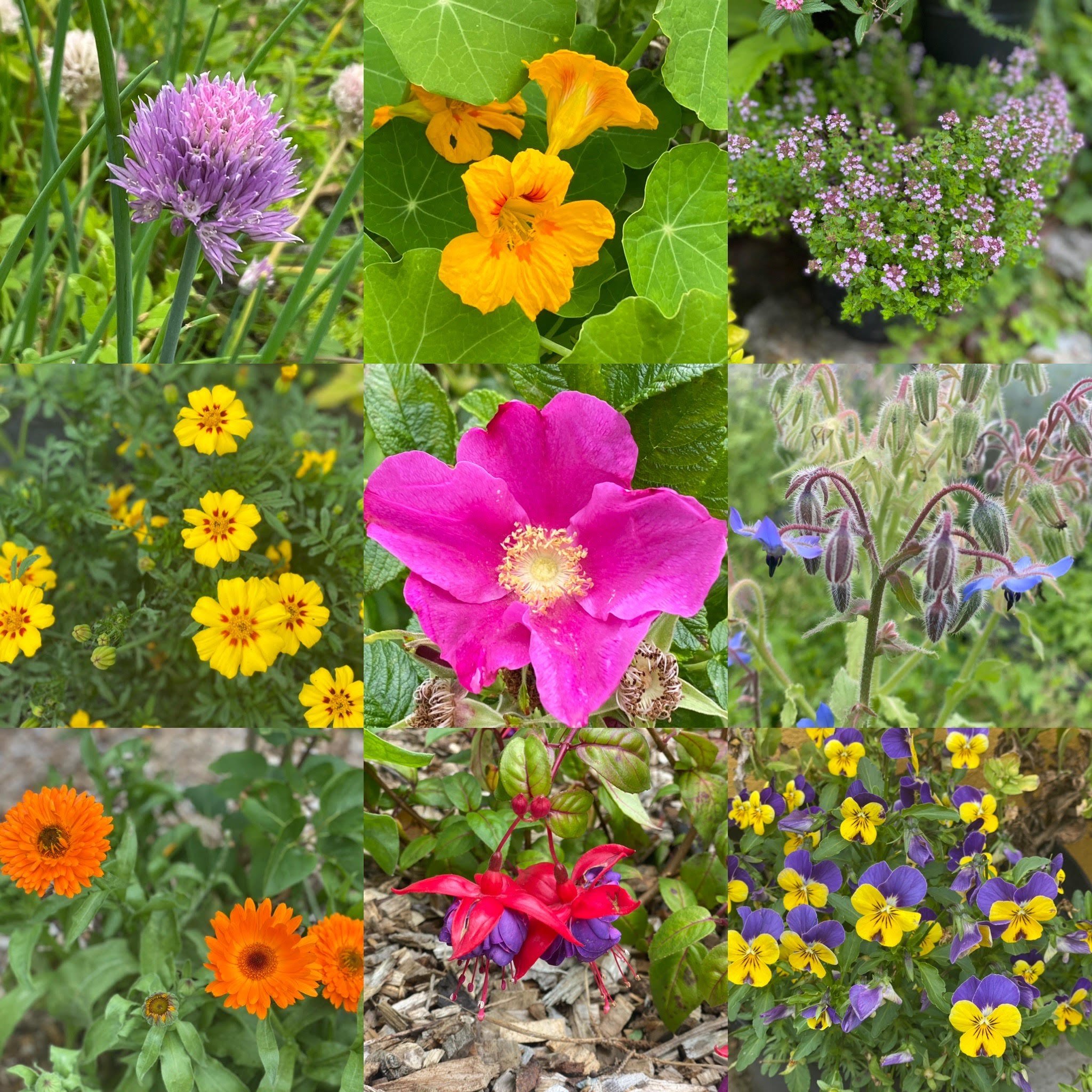Edible Flower Power
It is surprising how many flowers growing in our gardens are edible. They can be used in cooking or as decorations for various dishes. The Chinese were the first to experiment with flowers as food and their many and varied recipes can be traced back as far back as 3,000 B.C. In Roman times, the edible flowers of pinks, violets and roses were used in dishes and lavender in sauces. Gardeners and cooks over 1000 years ago were already using pot marigolds and orange blossom in their cooking. Today many fine restaurants around the world are using more and more edible flowers to enhance salads with their colour, texture and intriguing flavours, as well as for decoration on appetisers, starters, cakes and many other dishes.
It is always best to grow your own edible flowers so you can be sure that they are clean and fresh, picked at their prime (see tips below).
Growing your own also allows you to experiment and show off to dinner guests what you have grown and what you’ve created with a colourful and tasty dish.
Note - I have researched all the edible flowers listed below. However, individuals consuming the flowers, plants, or derivatives listed below should always start with small quantities if they haven’t used them before and to see if there are any adverse reactions!
Borage (Borago officinalis) - Mix flowers into vegetable and fruit salads, or use to garnish soups or to decorate salads and desserts. An excellent choice for freezing in ice cubes and floating on iced tea. Petals have a cucumber taste and the stamens add a hint of sweetness.
Chive flowers (Allium schoenoprasum) have a mild onion flavour and are surprisingly crunchy. They are widely used tossed in salads, pasta, omelettes and scrambled eggs. Or you can add a few to white fish dishes or to cheese sauce to give that extra bite. As tempting it may be to pop the whole flower into your mouth, refrain from doing so as the pungency in that quantity can be overwhelming. For garnish and cooking break the flower into individual florets .
Fuchsia (Fuchsia magellanica) - The stunning colours and graceful shape of fuchsias make them ideal as a green or fruit salad garnish. They look very decorative if crystallised or inserted into jelly. The berries are also edible and useful for making jams. Before eating the flower remove all green and brown bits and gently remove the stamen pistils as this will certainly enhance the petal flavour; (sweetly scented flowers).
Nasturtium (Tropaeolum majus and minus) - The fresh leaves and flowers have a peppery flavour similar to watercress. The flowers will add a spicy touch to salads and the green seeds can be chopped
Pot Marigolds or Calendulas (Calendula officinalis) - have a slightly peppery taste and will add a light, tangy flavour to breads and soups, as well as adding a touch of colour. They will make a bright and tasty addition to a tossed salad and can be used to decorate cakes. You can use fresh or dried petals as an economical substitute for saffron for adding colour to rice or butter. The fresh young leaves can also be used sparingly in salads.
Roses (Rosa) – calming, mild sedative, “raise the spirits and cheer the heart”; as a general rule, if a rose smells good, it will taste good. Petals have a delicate flavour which will improve cool drinks and fruit dishes, or why not try rose petal jam. Rosehips and petals can both be used in jellies. The flowers will also make attractive cake decorations. It is best to remove the white heel from the base of the petals before eating.
Tagetes (Tagetes patula, Tagetes tenuifolia, Tagetes patula x erecta) or better known as marigold is an edible flower. The flowers and leaves have a citrus taste and are often used in tea, as a garnish for drinks, to colour food and as a substitute for tarragon. If pulling the petals off the flowers, they can be tossed through salads, added to sandwiches to add vibrant colour and flavour. Eat in moderation!
Thyme flowers – (Thymus vulgaris) - Pinch off flowers and leaves to use as a flavourful garnish on salads, soups, or quiches. The flowers are often used to enhance herbed butters or spreads.
Wild Pansy or Viola flowers (Viola tricolor, Viola x williamsiana, Viola odorata, Viola cornuta) have a lettuce-like flavour and make a decorative addition to a green salad or to garnish a pâté or dessert. They can be used to decorate cakes and cookies or creamy desserts.
Harvesting top tips:
1. Only harvest what you need
2. Harvest just before use.
3. Gently shake flowers to remove insects.
4. Harvest when flowers are just opened.
5. Harvest carefully and store only in one layer in tubber ware boxes.

